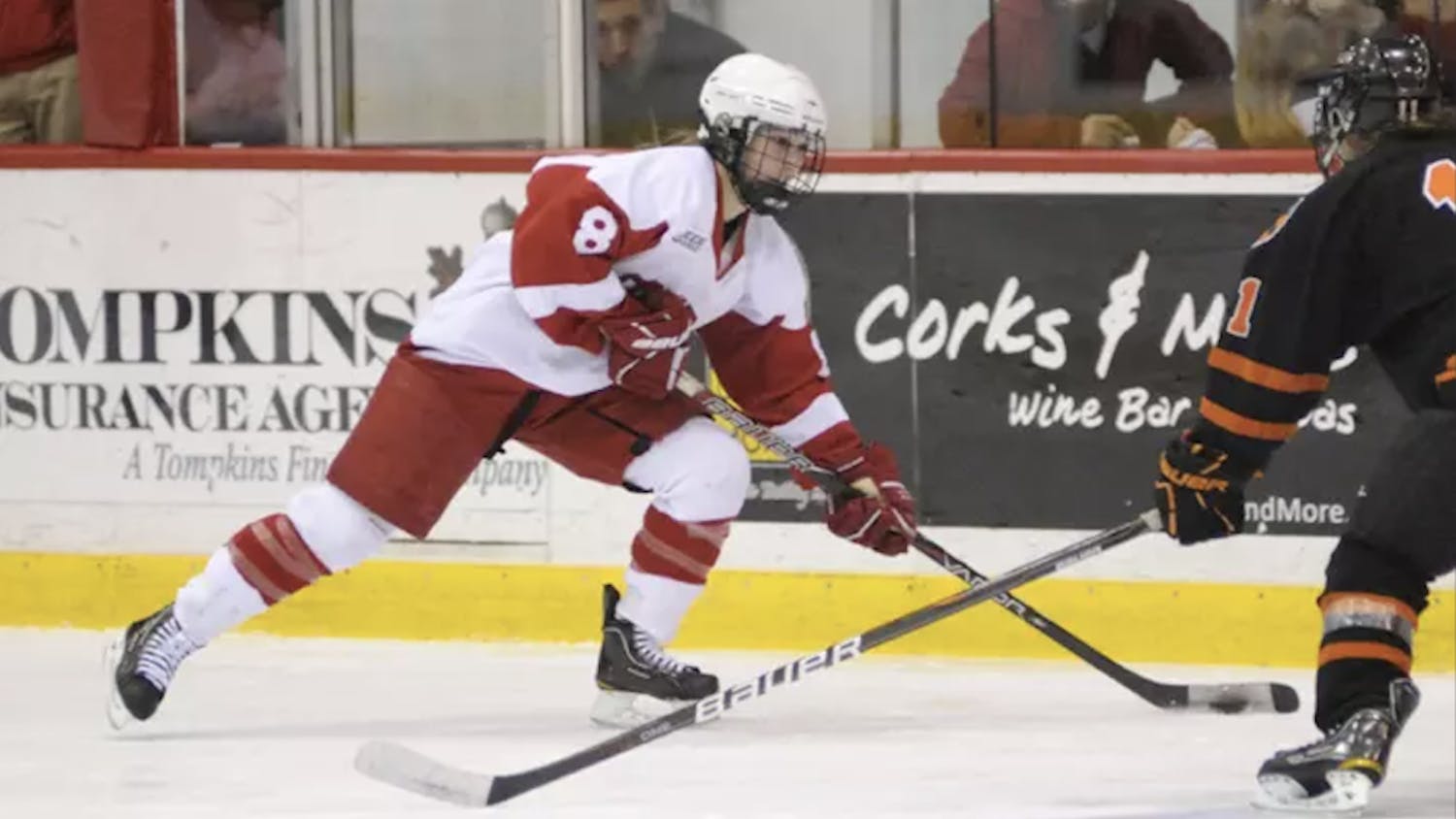For the football team (2-5, 1-3 Ivy), Saturday's 32-25 overtime defeat to Princeton (5-2, 3-1) was a tale of two halves. After dominating play for the first 30 minutes of action, the Red inexplicably came unglued and dropped a game that was firmly in its grasp.
After Halftime
Going into the intermission with a 25-10 lead, and beginning the second half with possession of the football, it appeared as though Cornell would even its mark in Ivy League play. However, the offense, which had been effective moving the ball in the first half, was unable to generate any momentum in the second. After totaling 195 yards of total offense to build its 15-point advantage, the Red was able to generate just 53 yards in the last two quarters and overtime combined.
Adjustments
One reason for the anemic second half output can be attributed to a change in the Tigers' defensive approach after the intermission. After allowing senior quarterback Mick Razzano time in the pocket to find his receivers in the first half, Princeton turned up the heat during its comeback.
"We started to pressure a bit more. We felt in the first half we allowed them to make some plays," said Princeton head coach Roger Hughes. "We tried to play a little more man in the second half and come up and jam them a little more and try to control them off the line of scrimmage."
Cornell, which scored two touchdowns in its final two possessions of the first half, was forced into six punts on its first six possessions after halftime. Those key defensive stands made by the Princeton defense seemed to give the Tigers the spark they needed to make their charge.
"We shut them down pretty well coming out a couple times, and you just keep on building off of that," said Princeton defensive end Joseph Weiss, who had 12 tackles and 1.5 sacks on the afternoon.
Pendergast agreed that the first couple of possessions of the half, in which his team went three and out, may have been a turning point in the game.
"I think that, in some way, maybe that began to swing it a little bit," he said.
Senior wide receiver Keith Ferguson, who had been the Red's best offensive player the past few weeks, had a fine start to the game, garnering 58 first-half receiving yards and even throwing for 49 on a wide receiver reverse pass to junior John Kellner. However, Ferguson, like the rest of the offense, was silent in the second half.
"They were doubling Keith. We were trying to spread them out in some of our passing formations, but they played better than we did," said Razzano. "They came out and stepped it up in the second half, and we came out and we didn't do as good as we did in the first half."
As Cornell's offense struggled, the defense, which forced three first half turnovers and played effectively for much of the game, was forced into a corner. Princeton controlled the ball for 18 minutes of the second half, wearing down a stingy Red defense.
"We obviously didn't finish the game like we started," said Pendergast. "I think that in the second half, Princeton played some very good defense, outstanding defense, and we weren't able to create any real momentum offensively. We were forced to play a lot of snaps with our defense."
Second halves have been a major thorn in the Red's side for most of the season, as the team has been outscored 124-56 this season after halftime. For the most part, Cornell has remained competitive or has held a lead at the halfway point, only to see opponents widen the margin or roar back after the break.
And Saturday's game was no different.
"We allowed Princeton to come back into the game, and they beat us," concluded Pendergast.
Archived article by Alex Ip










